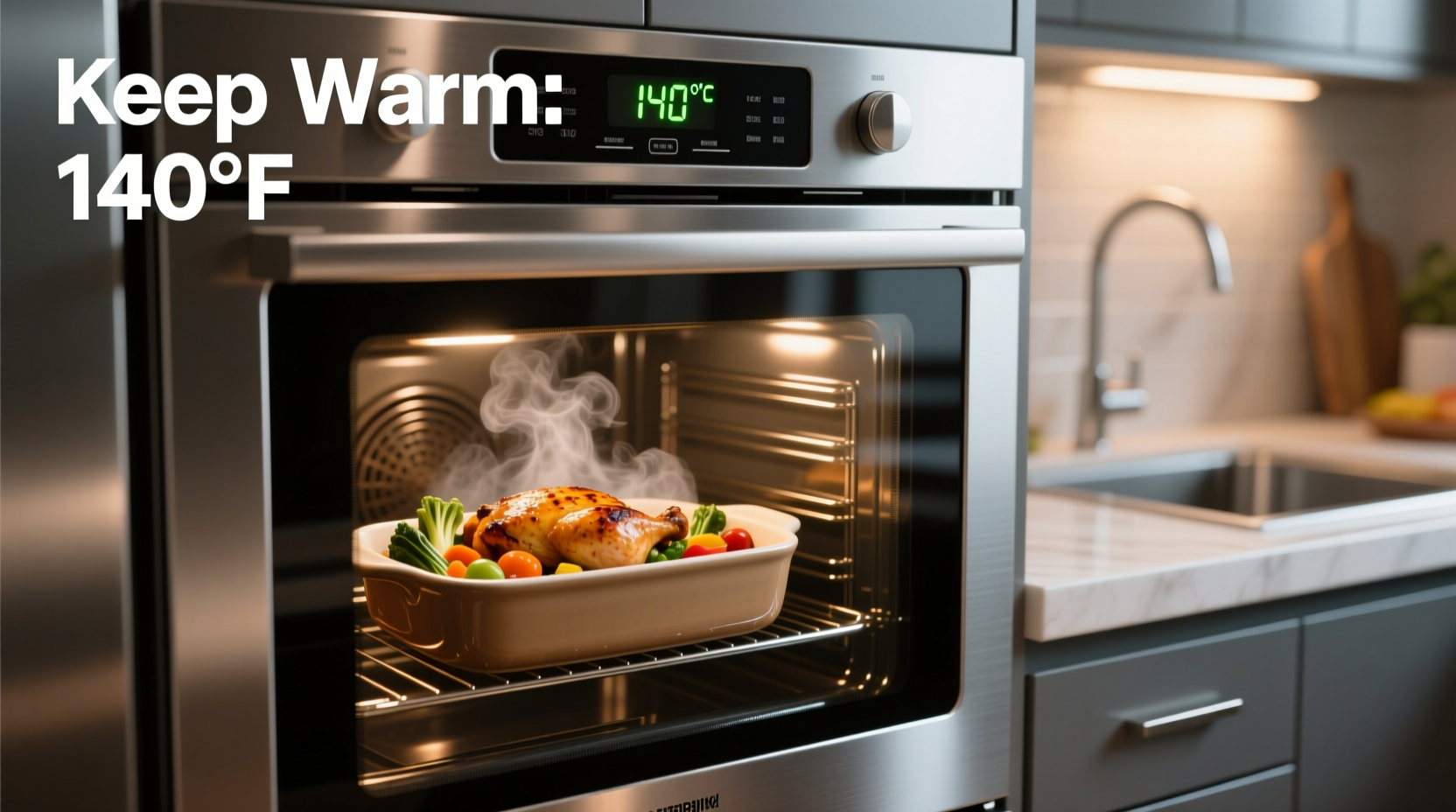When you're hosting a gathering or preparing a multi-course meal, knowing exactly what temp in oven to keep food warm can make the difference between perfectly prepared dishes and disappointing, dried-out meals. This precise temperature range maintains food safety while preserving texture and moisture—critical factors often overlooked in casual cooking advice.
Why the 140°F to 170°F Range Matters
Understanding the science behind food warming temperatures helps you make informed decisions in your kitchen. The USDA Food Safety and Inspection Service clearly states that cooked food should remain above 140°F to prevent bacterial growth in the temperature danger zone (40°F-140°F). However, setting your oven much higher than 170°F risks continuing the cooking process and drying out your food.
Food science research shows that proteins begin to lose significant moisture at temperatures above 165°F, while starches and vegetables maintain better texture between 145°F-160°F. This explains why professional kitchens use precise temperature ranges rather than a single "warm" setting.

Setting Your Oven for Optimal Food Warming
Most home ovens don't maintain precise temperatures at their lowest settings. Here's how to ensure accuracy:
- Use an independent oven thermometer - Place it on the rack where food will sit
- Preheat properly - Allow 10-15 minutes for temperature stabilization
- Avoid opening the door frequently - Each opening drops temperature by 25-50°F
- Position food correctly - Middle rack provides most even heat distribution
| Food Type | Optimal Warming Temp | Maximum Holding Time | Special Considerations |
|---|---|---|---|
| Meats & Poultry | 145°F-155°F | 2 hours | Cover with foil to retain moisture |
| Casseroles & Baked Dishes | 150°F-160°F | 90 minutes | Leave covered with original dish lid |
| Vegetables | 140°F-150°F | 1 hour | Add splash of liquid before covering |
| Rice & Grains | 150°F-165°F | 2 hours | Stir occasionally to prevent drying |
Practical Tips for Different Food Categories
Not all foods respond the same to warming temperatures. Understanding these differences prevents common kitchen disasters:
Proteins: The Delicate Balance
Meats and poultry require the most careful temperature management. The FDA Food Code recommends maintaining cooked proteins at 140°F or above, but for optimal quality, aim for 145°F-155°F. Higher temperatures cause proteins to contract further, squeezing out precious juices. For delicate fish, never exceed 145°F, as it will continue cooking rapidly at higher temperatures.
Casseroles and Baked Dishes: Retaining Moisture
These dishes often contain multiple components that react differently to heat. The ideal temperature range of 150°F-160°F keeps the dish warm without causing cheese toppings to become rubbery or sauces to separate. Always keep these covered during warming to prevent surface drying.
Vegetables: Preserving Texture
Vegetables lose their vibrant color and crisp-tender texture when held too hot for too long. The lower end of the warming spectrum (140°F-150°F) works best. For best results, add a small amount of water or broth to the container before covering and warming.
Common Mistakes to Avoid When Keeping Food Warm
Even with the right temperature setting, these common errors can ruin your efforts:
- Setting oven to "warm" without verification - Many ovens' warm setting exceeds 200°F
- Leaving food uncovered - Causes rapid moisture loss, especially for proteins
- Holding food too long - Quality declines significantly after 2 hours even at proper temperatures
- Placing food directly on oven rack - Use baking sheets to prevent uneven heating
- Not checking actual temperature - Oven dials are often inaccurate by 25°F or more
When to Consider Alternative Warming Methods
While ovens work well for many situations, these alternatives might be better for specific needs:
- Warming drawers - Maintain precise 140°F-170°F temperatures ideal for extended holding
- Slow cookers on "warm" setting - Typically maintain 165°F-175°F, good for soups and stews
- Chafing dishes with fuel - Maintain approximately 150°F when properly set up
- Insulated containers - Can keep food above 140°F for 1-2 hours without power
Remember that no method can maintain food quality indefinitely. The two-hour rule applies to all warming methods for food safety, though quality may decline before safety becomes an issue.
Final Temperature Check Before Serving
Always verify your food's internal temperature before serving, especially when keeping multiple dishes warm. A quick-read digital thermometer ensures both safety and quality. For meats, check the thickest part; for casseroles, check the center. If food has cooled below 140°F, return it to the oven for a few minutes to bring it back to the proper warming temperature.











 浙公网安备
33010002000092号
浙公网安备
33010002000092号 浙B2-20120091-4
浙B2-20120091-4